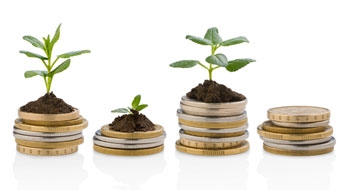
Large pension funds in Canada, in the U.S. and around the world have steadily increased their investment exposure to agriculture in recent years through farm infrastructure, soft commodities (anything that’s grown or bred) and agriculture-related stocks. While all of these represent viable opportunities to tap into a growing industry, pension funds will likely see the greatest long-term returns from investing in companies that are part of the agricultural value chain.
Until recently, all historical agricultural crises were triggered by supply shocks resulting from situations such as droughts and wars. Now, most of the fundamental supply/demand balance tightness is driven by fast-growing demand. Several factors support this increased demand, including a larger world population and changing dietary habits in emerging countries.
At the same time, production is constrained by factors such as global warming, protectionism and a finite amount of arable land. According to the Food and Agriculture Organization (FAO), the amount of arable land per inhabitant globally has dropped from more than half a hectare in 1950 to less than a quarter of a hectare in 2010 and is projected to continue to decline. Agricultural production needs to improve to meet demand, especially in emerging markets. The FAO estimates that at least $80 billion must be invested in agriculture in emerging countries every year from now until 2050 in order for supply to keep up with demand. This need represents a strong long-term investment opportunity—particularly for pension funds.
For most pension funds, buying equities in companies that are part of the agricultural value chain is the best way to invest in this sector. Equities offer better diversification than commodity markets. While only a few soft commodities are available through physical contracts, many agriculture companies provide investors with exposure to the full spectrum of agricultural products, including untraded ones (such as fish or fruits), and to the full agricultural value chain, including support resources (fertilizers) and equipment (irrigation systems).
Equity performance is also driven by supply/demand fundamentals and long-term trends, whereas physical contracts are more sensitive to short-term drivers such as money inflows and outflows. And the short term has become even shorter, as more hedge funds and speculators have discovered this sector. Given their lower volatility exposure, agricultural equities offer a better risk/reward profile over the medium to long terms.
Soft commodity prices will likely be held in check by governments, for which food supply issues are a major concern. In 2008, a doubling of grain prices led to civil unrest in South America and North Africa as basic food items became unaffordable for many, underlining the need not just for increased supply but also for increased affordable supply. All governments are ready to take measures to curb price increases and rein in food inflation, and some countries, such as China, have already started to implement such measures.
As long-term investors, pension plans need to gain exposure to volume growth. Investing in agriculture companies that will undertake the investments needed to increase productivity allows this, as higher sales volumes will drive plan earnings. Interestingly, this will result in the decoupling of the development of global agriculture from the global economic cycle, making investment in agricultural companies even more attractive over the long run. Returns will be supported by long-term demographic factors and political will rather than cyclical short-
term economic factors.
Food availability concerns everyone, making agriculture a unique sector for investment. It offers a rare opportunity to get in on the ground floor.
Nicolas Fragneau is a global commodity equities portfolio manager with Amundi, based in France.
